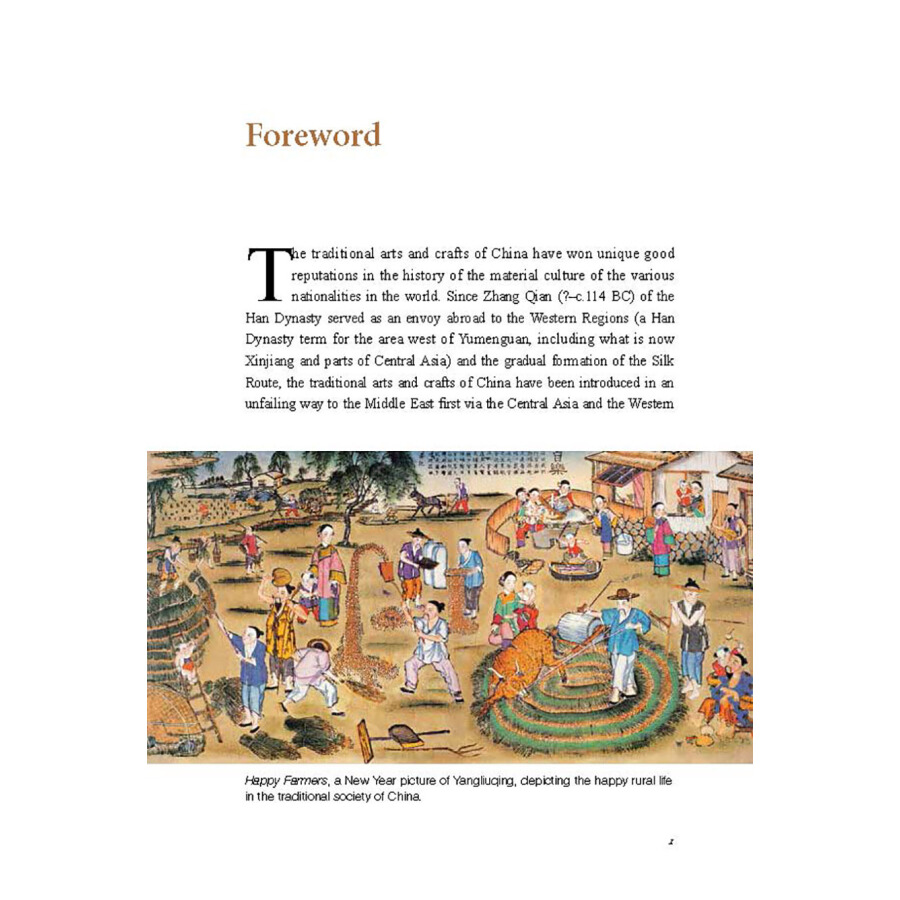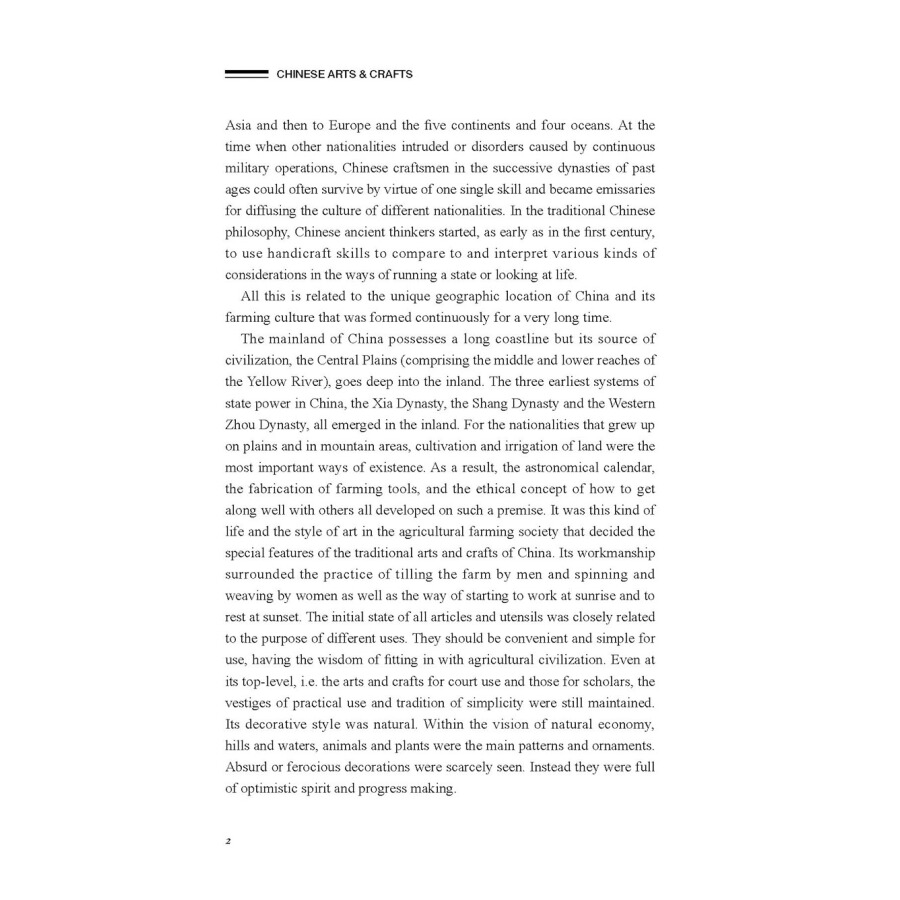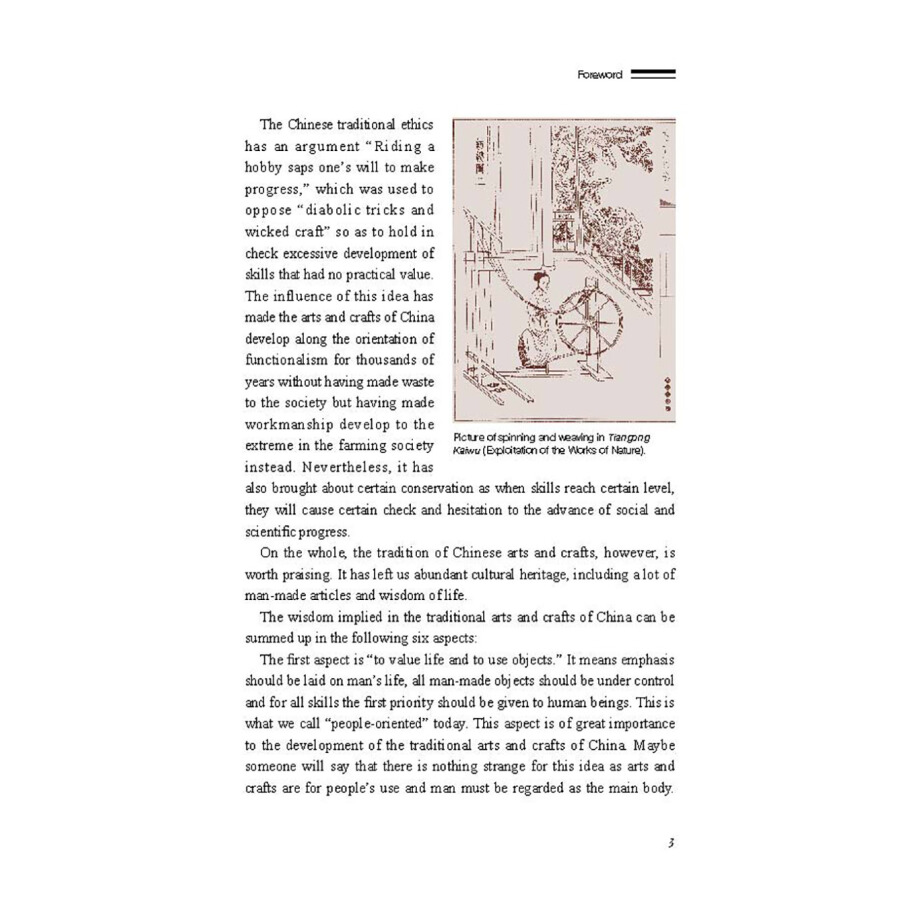Details
The heaven has time, the earth has vitality, material has beauty, work has ingenuity. Chinese arts and crafts enjoy a unique reputation in the history of material civilization among various nations in the world. For several thousands of years, people’s handicrafts in their development echoed with the rhythm of life working with the rising sun and reposing at sunset. All species of handicrafts in their earliest states are related to usage: always practical, plain and warm, and in possession of a wisdom that adapts to agricultural civilization. Even the high end handicrafts at the court and among the literati, such unpretentious tradition still remain and reveal a touch of pragmatic trace. All this is associated with the everlasting farming culture of China and her exceptional geographical position, which has left us rich cultural heritage in which wisdom of life and human creation is contained.
About Autho
Hang Jian, born 1961, Ph. D., vice president of China Academy of Art, curator of the National Art Museum of China. Graduated from Department of Art History, Central Academy of Arts, he was once editor-in-chief of the Decoration Journal; director of Department of Art History, Academy of Arts and Design, Tsinghua University; managing deputy director of Cheung Kong School of Arts and Design, Shantou University; senior visiting scholar to College of Architecture, Art, and Planning, Cornell University, USA. His writings include Design, Way of Design Basic Problems in Chinese Design, A History of Chinese Technology Aesthetics, The Idea of Craftsmanship, New Figural Art, Art Dimensions, Wisdom of the Body Spiritual Landscape of Contemporary Chinese Oil Paintings, A History of Chinese Technology Aesthetic Ideology, etc.
Guo Qiuhui, born 1979, Doctor of Design Art, graduated from Department of Art History, currently postdoctoral researcher with Academy of Arts and Design, Tsinghua University. Writings include Chinese Arts and Crafts (written jointly), Chasing the Sun’s Light and Reflection (compiled jointly).
Sample Pages Preview



The traditional arts and crafts of China have won unique good reputations in the history of the material culture of the various nationalities in the world. Since Zhang Qian (?–c.114 BC) of the Han Dynasty served as an envoy abroad to the Western Regions (a Han Dynasty term for the area west of Yumenguan, including what is now Xinjiang and parts of Central Asia) and the gradual formation of the Silk Route, the traditional arts and crafts of China have been introduced in an unfailing way to the Middle East first via the Central Asia and the Western Asia and then to Europe and the five continents and four oceans. At the time when other nationalities intruded or disorders caused by continuous military operations, Chinese craftsmen in the successive dynasties of past ages could often survive by virtue of one single skill and became emissaries for diffusing the culture of different nationalities. In the traditional Chinese philosophy, Chinese ancient thinkers started, as early as in the first century, to use handicraft skills to compare to and interpret various kinds of considerations in the ways of running a state or looking at life.
All this is related to the unique geographic location of China and its farming culture that was formed continuously for a very long time.
The mainland of China possesses a long coastline but its source of civilization, the Central Plains (comprising the middle and lower reaches of the Yellow River), goes deep into the inland. The three earliest systems of state power in China, the Xia Dynasty, the Shang Dynasty and the Western Zhou Dynasty, all emerged in the inland. For the nationalities that grew up on plains and in mountain areas, cultivation and irrigation of land were the most important ways of existence. As a result, the astronomical calendar, the fabrication of farming tools, and the ethical concept of how to get along well with others all developed on such a premise. It was this kind of life and the style of art in the agricultural farming society that decided the special features of the traditional arts and crafts of China. Its workmanship surrounded the practice of tilling the farm by men and spinning and weaving by women as well as the way of starting to work at sunrise and to rest at sunset. The initial state of all articles and utensils was closely related to the purpose of different uses. They should be convenient and simple for use, having the wisdom of fitting in with agricultural civilization. Even at its top-level, i.e. the arts and crafts for court use and those for scholars, the vestiges of practical use and tradition of simplicity were still maintained. Its decorative style was natural. Within the vision of natural economy, hills and waters, animals and plants were the main patterns and ornaments. Absurd or ferocious decorations were scarcely seen. Instead they were full of optimistic spirit and progress making.


